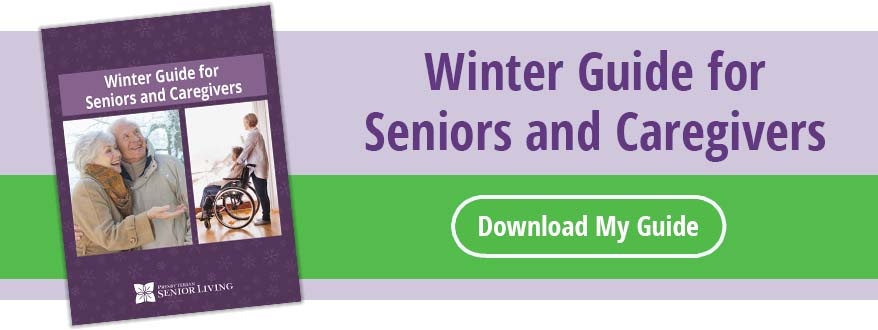
5 Steps to Fight Back Against Seasonal Affective Disorder in Fall and Winter
As the days grow shorter and temperatures begin to drop, many people start to feel more sluggish and depressed than usual. While it’s natural to experience shifts in mood with the changing of the seasons, some people develop a more serious form of depression known as Seasonal Affective Disorder. This condition can have a significant impact on daily life, especially for older adults.
SAD is a type of depression that typically occurs in the fall and winter months when there is less sunlight. The disorder can lead to feelings of sadness and fatigue and a loss of interest in activities that were enjoyable. Some scientists believe SAD results from a disruption in the body’s circadian rhythm, reduced serotonin levels, and an imbalance in melatonin production, which affects sleep patterns and mood.
How does Seasonal Affective Disorder affect daily life?
SAD can manifest itself in several ways:
Low energy: Many individuals with SAD feel persistently fatigued, even after getting what would be considered a full night’s sleep. This exhaustion can make even simple everyday tasks, such as getting dressed, preparing meals, or running errands, feel insurmountable. The lack of energy also can cause people to reduce their physical activity, which might, in turn, contribute to feelings of lethargy, creating a vicious cycle of inactivity and tiredness.
Difficulty concentrating: Whether trying to complete work assignments, engage in hobbies, or even follow conversations with friends and family, individuals with SAD might find their attention wandering or feel mentally foggy. This inability to focus can lead to frustration and a sense of incompetence, as tasks that once felt manageable suddenly seem overwhelming or confusing.

Changes in appetite: These changes can lead to cravings for carbohydrate-rich foods such as bread, pasta, and sweets. Yielding to the cravings can result in weight gain and decreased mobility during the winter months. While carbohydrates can offer a temporary boost in energy and mood by increasing serotonin levels, the effects are short-lived. Over time, weight gain can contribute to feelings of sluggishness, low self-esteem, and further fatigue.
Social withdrawal: A lack of motivation might cause people to isolate themselves and avoid friends and family, which can lead to emotional vulnerability and reduced social interaction during the winter. This can increase loneliness and heighten the impact of SAD.
For older adults, these symptoms can be particularly challenging. Reduced mobility, health concerns, or living alone can exacerbate feelings of isolation and fatigue. Compounding the problem, the winter months might limit opportunities for outdoor activities and social engagement.
5 steps to counteract Seasonal Affective Disorder
While SAD can cause people to feel overwhelmed, there are several strategies to help improve mood and well-being during the colder months:
- Increase light exposure: Light therapy is one of the most effective treatments for SAD. Spending time outside during daylight hours, even on cloudy days, can improve your mood. For those who struggle to get outside, a light therapy box, which mimics natural sunlight, can be used to stimulate serotonin production.

- Stay physically active: Regular exercise is a natural mood booster and can be as simple as walking, practicing yoga, or performing chair exercises that are easy on the joints. For older adults, staying active also can reduce aches and pains that tend to worsen in colder weather.
- Maintain social connections: Socializing is key to combating the isolation that can accompany SAD. Make time for phone calls, video chats, or in-person visits with friends and family. Participating in community events and programs also helps foster connection and lifts your spirits.
- Eat a healthy, balanced diet: Eating a well-balanced diet that includes plenty of fruits, vegetables, whole grains, and lean proteins can improve energy levels and prevent the weight gain sometimes associated with SAD. Limiting processed foods and sugary snacks helps maintain stable blood sugar levels, preventing mood swings. For older adults, managing weight and energy levels is particularly important as both can impact overall health and mobility.

- Talk to a professional: If symptoms of SAD become overwhelming or interfere with daily life, speak with a health care provider, who can recommend therapies such as counseling, antidepressants, or further support for managing mood.
Seasonal Affective Disorder can have a profound negative effect on daily life, particularly for older adults who already might face challenges related to health, mobility, and social engagement. By recognizing the signs of SAD and taking proactive steps, you can improve your mood, maintain a healthy routine, and stay connected to friends, family, and neighbors throughout the darker months.
About Presbyterian Senior Living
As the trusted leader in aging services, Presbyterian Senior Living combines over 95 years of experience with innovative approaches to senior communities and services. Across our 27 communities in PA, MD, OH, and DE, we serve over 6,500 seniors. We are committed to: FOSTERING teamwork and responsibility. UPHOLDING integrity in every action. EMBRACING innovation to create opportunities for everyone’s success. LEADING with compassion and respect.


